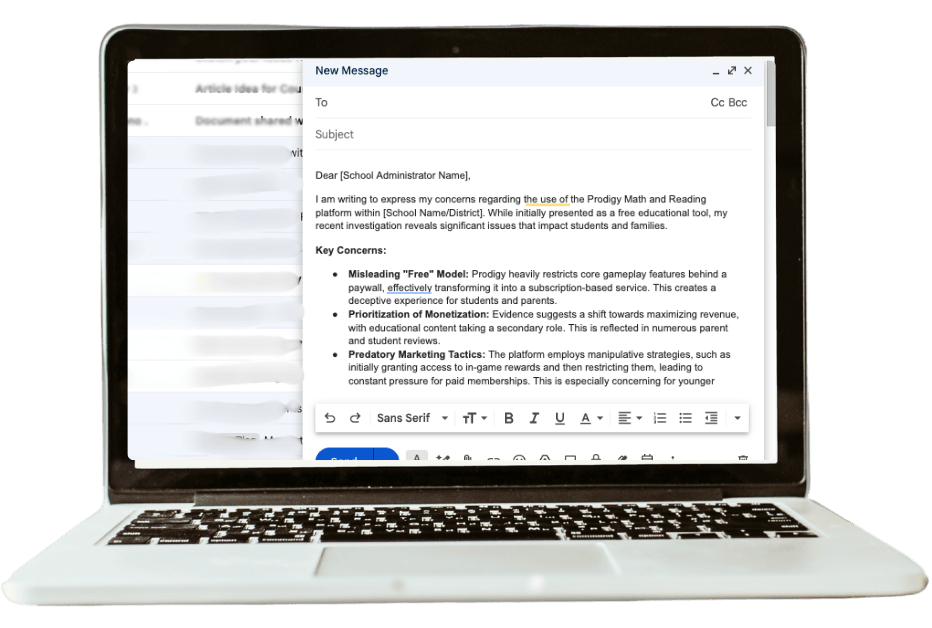Like most parents, I wrestle with the pull of digital distractions at home. In today’s world, it feels nearly impossible to unplug from a life that revolves around tech. Yet no one wants their kids’ faces constantly glowing from a screen—and honestly, we don’t want ours to be either.
That’s why I’m leaning into simple analog swaps that help our home feel more connected—for my kids and for me.
What’s the benefit? Relying too heavily on technology for every task that our day requires of us eventually rewires our brain chemistry. Nobody likes feeling like a robot—entirely controlled by an outside force.
However, when we overexpose ourselves to dopamine, the brain begins requiring more of it to achieve the same desired effect. It tricks us into believing we just need to find the next dopamine hit. This cycle of chasing satisfaction through our screens can lead to feelings of crankiness, anxiety, and desensitization. You’ve likely witnessed this phenomenon inside your own home.
Conversely, when we break the cycle of digital dependence, we gain the freedom to connect with a greater range of better things: God, nature, the other members of our household, and even our own thoughts, feelings, and dreams. We regain a bit of our humanity and creativity, too. We feel calmer and experience a greater sense of peace.
With these benefits in mind, let’s examine some common digital pitfalls that parents and kids often fall into, and why. When you identify the underlying cause or vulnerability, you can find an alternative that better addresses the need.
Common Traps and the Analog Alternatives for Reconnecting #irl
Here are five common digital traps and the analog swaps that will help you and your family break free:
Babysitting Bored Kids with a Device
Your kids are bored or restless, and you need to get work done. You grab for the TV changer or device and let the cheap babysitter win out.
Why It’s Harmful:
Treating boredom with screens leads to more boredom. It reduces your child’s capacity to creatively problem-solve their aversion to unstructured downtime because of a lack of practice.
What You Are Desiring:
You want your kids to be able to engage in self-directed play and entertain themselves when you are unable to be present with them.
Better Solutions:
Get out the crafting supplies, some puzzles, or LEGOS for a bit of family room fun. If your kids are old enough to play outside on their own, send them outdoors to get some fresh air. You can watch them from the window or let them venture a little further.
If you’ve got a lot on your plate, unload some of the household tasks onto your kids. Remind them that their contributions to the family are just as valuable as the work you do. Give them fair warning that you will be on a work call. Then, work together to create a list of helpful tasks around the house that will appropriately challenge them and make them feel proud.
First Thing Morning Phone Check-in
You start your day with an early morning phone check-in.
Why It’s Harmful:
Your body needs time to regulate its nervous system before being bombarded with dopamine.
What You Are Desiring:
It’s tempting to put off the demands the day will bring with digital distractions. Plus, you need a little pick-me-up to start the day. The phone’s bright lights and brain stimulation can serve to “wake” you up, albeit with less peace.
Better Solutions:
- Engage the senses. Get out of bed and open a blind to let natural light into the room. If the weather permits, open the window and take a big whiff of fresh air. An article in Premier Health suggests you can help change your own brain chemistry with these simple choices: “Breathing fresh air can raise levels of oxygen in your brain, which in turn boosts the levels of serotonin,” says the author. Serotonin is a mood-boosting neurotransmitter.
- Start the coffee pot—the benefits are tri-fold. Having to get up and start the pot gets your body moving. The brewing coffee allows you to inhale the soothing aroma. When it’s done, you’ll have a caffeine boost a little sooner than if you stayed in bed with the glowing rectangle. Finally, get ahead of the temptation. Keeping your phone out of your bedroom or away from your bed will help you form healthier habits and a morning routine you can feel good about. The same goes for your kids’ devices!
End-of-Day Scrolling
You (or your kids) end the day with a mind-numbing scroll session.
Why It’s Harmful:
Bedtime is often the best time of day for connecting with a spouse or an older child. The later evening hours increase vulnerability, which can lead to deeper connections with your loved ones, finally allowing you to hear how they felt about the day’s ups and downs.
Additionally, the blue light and pace of the scroll stimulate the brain when it’s trying to do the opposite: unwind. While scrolling provides a temporary escape after a long day, it also prolongs the time it takes to fall asleep.
What You Are Desiring:
It’s natural and quite normal to want a little downtime before bed—an opportunity to unwind after a demanding day.
Better Solutions:
For a healthier way to unwind, tap into the world of fiction or read a chapter of the nonfiction book you’ve been meaning to open. Obtain a physical copy or locate the title on a digital reader equipped with E Ink technology. One of my friends has a habit of completing the daily Sudoku puzzle from the local paper. These are great ways to reduce blue light exposure and improve mental health.
When your loved ones are ready to connect at bedtime, you’ll be more regulated to pull away from a book than from your phone. Additionally, putting kids to bed and then picking up where you left off in your latest book is much more conducive to getting a good night’s sleep than scrolling.
If you’re low on time, open a window—listen for the sounds of cicadas and crickets before bed instead of engaging with the constant ping of notifications.
Finally, if you’d like to catch up with people on social media, set aside a specific time slot and stick to it. As you strategically carve this time, keep in mind your goal of being screen-free 30-60 minutes before bed.
Relying on Digital Apps for Everything
Organizing every detail of life on digital apps.
Why It’s Harmful:
Influencer Zacc Rowlands from The Creator Cycle recently documented his transition to all forms of digital organization—and why he no sooner quit. “I realized the reality of what I had created: one thousand more reasons to look at my phone.”
What You Are Desiring:
A streamlined way to organize all the moving parts of life is helpful—from work to home, from carpools to daily chores, and from store lists to long- and short-term to-do lists.
Analog Solutions:
Sticky notes, a paper-and-pen planner, and an analog calendar may be just what you need to stay organized without the constant distraction of your phone. Yes, some things may be more efficient with the convenience of a built-in app. But even replacing just one digital tool with an analog one can quiet the noise of the online world. Furthermore, did you know that handwriting can be therapeutic?
Doing Homework Online Only
Why It’s Harmful:
In a digital world, kids need to learn how to complete tasks online and be proficient in technology. However, it occasionally becomes too much. If your kids are doing homework too close to bedtime, for example, their eyes need a break. Additionally, a child or teen risks being distracted by all the other features the device offers rather than focusing on the task at hand: homework.
Perhaps most importantly, Psychology Today offers significant data that demonstrates our tendency to learn best in physical formats. They claim:
- “Comprehension is six to eight times better with physical books than e-readers.
- Physical books help readers absorb and recall content more effectively.
- Turning pages as we read creates an “index” in the brain, mapping what we read visually to a particular page.”
What You Are Desiring:
You know your child needs to complete the course and learn the material. You and your child both hope she gets the grade she’s capable of.
A Better Solution:
Quiz apps like Kahoot! allow students to create their own quizzes tailored to what they are learning. After they’ve created one, take the computer from them and offer to quiz them using the tailored quiz. Encourage them to make flashcards. Students learn material best when they’ve engaged with it in multiple ways. If the coursework is only available online, offer to read some of it aloud. Occasionally, opt for the printer or consider ordering a physical copy.
Now What?
Our current age is designed to keep us online and always reaching for one more scroll, swipe, or stream. When we let digital distractions take over, the real loss is that we’re often missing out on the greater things in life. When we become aware that we’re stuck in patterns that pull us away from the blessings right in front of us, the good news is we can break free by carefully choosing alternatives that encourage real interaction.
So, which common trap will you be replacing with analog first? Make it a goal to replace one old habit with a new one by the end of the week.

Written by: Jenna Kruse
As a speaker, writer, and mom of three, Jenna Kruse helps parents with school-aged kids overcome the frustration, fatigue, and hopelessness of parenting in the digital age so they can enjoy their kids and thrive in their role of raising the next generation to know and love Jesus. Alongside her husband, Jenna has worked with teens for over twenty years in the public school setting, the non-profit sector, and the church.




